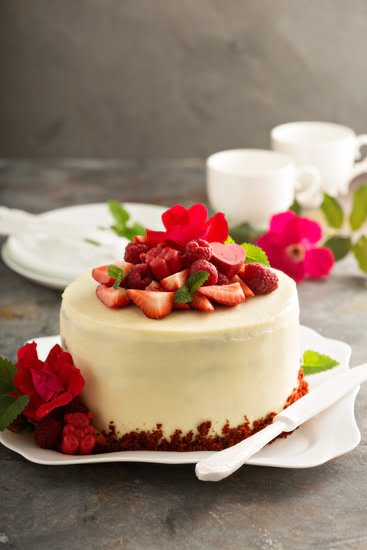Sugar work cake decorating is a unique and exquisite technique that adds a touch of elegance and artistry to cakes. In this introductory section, we will delve into the world of sugar work cake decorating, exploring its definition, importance, and popularity. By understanding the significance of this specific cake decorating technique, we can gain insight into why it has captured the hearts of both professional cake decorators and enthusiasts alike.
So, what exactly is sugar work cake decorating? It is a specialized form of cake decoration that involves creating intricate designs using sugar-based materials. From delicate sculptures to dazzling ribbons and elaborate toppers, sugar work allows for limitless possibilities in terms of design and creativity. Each piece is carefully crafted by hand, resulting in stunning edible masterpieces that are sure to impress any onlooker.
The importance and popularity of sugar work cannot be overstated. It elevates cakes to a whole new level of sophistication, turning them into centerpieces worthy of admiration.
Whether it’s a wedding cake adorned with elegant sugar flowers or a birthday cake featuring personalized sugar figurines, sugar work adds an element of luxury and refinement to any occasion. As we delve deeper into this blog post, we will explore the rich history behind sugar work cake decorating, discover essential tools and techniques needed for success, troubleshoot common issues faced during the process, and provide inspiration for incorporating it into various cake designs.
Join us on a journey through the sweet art form of sugar work cake decorating as we unlock its secrets and uncover the methods behind creating breathtaking edible creations.
History of Sugar Work Cake Decorating
Sugar work cake decorating has a rich history dating back centuries. The origins of this intricate technique can be traced to ancient Egypt and India, where sugar was first discovered and used for artistic purposes. From these early civilizations, the art of sugar work spread across the globe, evolving and adapting as it encountered different cultures and traditions.
In Egypt, sugar was considered a luxury item reserved for the pharaohs and nobility. It was often sculpted into elaborate shapes such as animals or mythical creatures to accompany extravagant feasts. Similarly, in India, sugar sculptures known as Mithai were created as offerings to deities or used to decorate special occasions like weddings.
However, it wasn’t until the Middle Ages in Europe that sugar work cake decorating began to gain popularity among the general population. During this time, sugar became more accessible due to trade routes with the Middle East. As a result, skilled artisans started using sugar to create intricate decorations for royal banquets and celebrations.
One of the notable figures in the history of sugar work cake decorating is Nicolas Appert – a French confectioner who revolutionized the preservation of food through his discoveries in canning techniques. Appert’s innovations also extended to the realm of cake decoration, as he introduced new methods for working with sugar, including creating molds and using different types of syrup. His contributions paved the way for modern-day techniques in sugar work cake decorating.
| Country | Period | Significance |
|---|---|---|
| Egypt | Ancient times | Sugar sculptures accompanied feast tables for pharaohs. |
| India | Ancient times | Mithai sugar sculptures were created for religious ceremonies and special events. |
| Europe | Middle Ages | Sugar work gained popularity among the general population due to increased trade accessibility. |
| France | 18th century | Nicolas Appert introduced innovative techniques in sugar work cake decorating. |
Essential Tools and Materials for Sugar Work Cake Decorating
List of Essential Tools and Equipment
To successfully engage in sugar work cake decorating, it is essential to have the right tools and equipment. Here is a comprehensive list of the necessary items:
- Sugar Thermometer: A sugar thermometer is crucial for accurately monitoring the temperature of the sugar syrup while working with it. This helps achieve the desired consistency and prevent burning or crystallization.
- Silicone Rolling Pin: A silicone rolling pin is ideal for rolling out sugar paste or fondant to create thin sheets that can be used for intricate designs or covering cakes.
- Confectionery Funnel: A confectionery funnel allows for precise control when pouring hot sugar syrup into molds or creating delicate threads for decorations.
- Pulling Gloves: To protect your hands from heat and ensure safe handling of pulled sugar, pulling gloves are essential. They provide a non-slip grip and protect against burns.
- Offset Spatula: An offset spatula is helpful for spreading icing, royal icing, or buttercream on the surface of a cake, ensuring smooth application.
- Heat Lamp: A heat lamp helps maintain a consistent temperature while working with sugar during cold weather or in air-conditioned environments.
Finding Tools and Materials
Finding specialized tools and materials for sugar work cake decorating can be challenging. However, they can be sourced from various places:
- Specialty Cake Decorating Stores: Local specialty stores that cater to bakers and cake decorators often carry a wide range of tools specifically designed for sugar work cake decorating.
- Online Retailers: Many online retailers offer an extensive selection of tools and materials for sugar work cake decorating. Websites specializing in baking supplies or dedicated marketplaces make it easy to find exactly what you need.
- Artisanal Suppliers: Some artisans specialize in handcrafted tools specific to sugar work cake decorating. These unique pieces may not be as widely available but can add a touch of artistry to the process.
- Cake Decorating Classes and Workshops: Attending cake decorating classes or workshops can be an excellent way to learn about essential tools and materials. Instructors often provide guidance on where to find them, including local suppliers or online resources.
It is important to invest in high-quality tools and materials for sugar work cake decorating as they can greatly impact the outcome of your creations.
Basic Techniques in Sugar Work Cake Decorating
Sugar work cake decorating involves a variety of techniques that allow bakers and cake decorators to create stunning edible art pieces. Here, we will explore the fundamental techniques used in sugar work cake decorating, providing step-by-step instructions and visuals to help you master these skills.
Pulling and Blowing Sugar
One of the most iconic techniques in sugar work cake decorating is pulling and blowing sugar. This technique involves heating sugar until it reaches a specific temperature and then manipulating it while it is still pliable.
To pull sugar, you will need to wear heat-resistant gloves and carefully stretch the melted sugar into thin strands, which can be shaped into different designs like flowers or ribbons. Blowing sugar requires a slightly different approach, as you will use a pump or mouthpiece to blow air into melted sugar, creating delicate and intricate shapes such as spheres or bubbles.
Creating Sugar Ribbons
Sugar ribbons are a versatile decorative element commonly used in sugar work cake decorating. To create them, you will need a ribbon cutter or a rolling pin with adjustable guides to achieve the desired width for your ribbon. Roll out your heated sugar onto a smooth surface, ensuring that it is even and thin.
Then, cut the ribbon using the cutter or guide on your rolling pin. Sugar ribbons can be used to adorn cakes, add texture to dessert plates, or even form bows for more elaborate designs.
Mold Casting with Isomalt
Isomalt is a type of sugar substitute often used in sugar work cake decorating because of its clarity and stability under high temperatures. Mold casting with isomalt involves melting down isomalt pellets until they reach the right consistency for pouring into molds.
Once cooled and hardened, these molded shapes can be painted with food coloring or gold dust for added visual appeal. Isomalt molds are perfect for creating intricate designs like flowers, figurines, or decorative elements that you can use to enhance the overall look of your cake.
By mastering these basic techniques in sugar work cake decorating, you will be able to add a touch of elegance and artistry to your cakes. Remember to practice and experiment with different designs and variations to develop your own unique style in sugar work. In the next section, we will explore more advanced techniques that will further elevate your sugar work cake decorating skills.
Advanced Sugar Work Cake Decorating Techniques
In the world of cake decorating, advanced sugar work techniques can elevate a simple cake into an extraordinary masterpiece. These techniques require skill, patience, and precision to create intricate sugar sculptures, cake toppers, and other awe-inspiring designs. In this section, we will delve into some of these advanced sugar work cake decorating techniques and provide tips and tricks for mastering them.
One of the most impressive advanced sugar work techniques is the art of creating sugar flowers. From delicate roses to vibrant orchids, sugar flowers allow decorators to incorporate natural beauty into their cake designs. To create these lifelike flowers, decorators use a combination of gum paste or flower paste and specialized tools such as petal cutters, ball tools, and veining mats. By carefully shaping each petal and layering them together, decorators can achieve stunningly realistic floral creations.
Another advanced technique in sugar work cake decorating is the creation of intricate lace or filigree designs. These delicate patterns require a steady hand and meticulous attention to detail. Decorators typically use royal icing or edible lace mix to pipe decorative patterns onto cakes or create lace-like motifs that can be adhered onto fondant-covered cakes. With practice and precision piping skills, decorators can achieve exquisite lace or filigree designs that add a touch of elegance to any cake.
For those who dare to push boundaries in their sugar work cake decorating journey, sculpting three-dimensional figures from sugar is an exciting challenge. From quirky characters to lifelike replicas of people and animals, sculpted sugar figures can truly bring a cake to life.
This technique involves working with modeling chocolate or pastillage – a type of edible clay – to shape the desired figure before adding intricate details with royal icing or colored cocoa butter. The possibilities are endless when it comes to sculpting with sugar, allowing decorators to let their creativity run wild.
By mastering these advanced sugar work cake decorating techniques, decorators can take their skills to a whole new level and create show-stopping cakes that leave a lasting impression. While these techniques may require practice and dedication, the end result is well worth the effort. Whether it’s crafting delicate sugar flowers, creating intricate lace designs, or sculpting three-dimensional figures, advanced sugar work techniques open up a world of possibilities for those who are passionate about cake decorating.
| Advanced Sugar Work Cake Decorating Techniques | Description |
|---|---|
| Sugar Flowers | Using gum paste or flower paste to create lifelike floral designs. |
| Lace or Filigree Designs | Piping intricate lace patterns or using edible lace mix to add elegance to cakes. |
| Sculpted Sugar Figures | Crafting three-dimensional figures using modeling chocolate or pastillage. |
Troubleshooting Common Issues in Sugar Work Cake Decorating
Sugar work cake decorating can be a challenging technique to master, and even experienced decorators can run into common issues along the way. In this section, we will address some of the most common challenges faced during sugar work cake decorating and provide solutions and troubleshooting tips to help you overcome them.
One common issue encountered in sugar work cake decorating is temperature control. Sugar has different states at different temperatures, and achieving the right consistency is crucial for successful sugar work. If your sugar becomes too hot, it can become too soft or melt entirely, making it difficult to shape or mold.
On the other hand, if your sugar becomes too cold, it can harden quickly and become brittle, making it challenging to work with as well. To avoid these issues, it’s important to use a candy thermometer to monitor the temperature of your melted sugar and maintain it within the recommended range for the specific technique you are using.
Another challenge that decorators often face is achieving consistent color in their sugar work. When working with colored sugars or syrups, it can be tricky to achieve an even distribution of color throughout your creations.
To ensure color consistency, consider using gel food coloring instead of liquid ones as they are more concentrated and will give you better control over the shade you desire. Additionally, mix your colors thoroughly before adding them to your sugar mixture or syrup to prevent streaks or uneven coloring.
Preventing air bubbles is another concern when working with sugar in cake decorating. Air bubbles can significantly affect the smoothness and overall appearance of your finished piece.
To avoid this issue, make sure to eliminate any air bubbles trapped in your melted sugar by gently tapping or shaking your container while pouring it into molds or shaping it. You can also use a heat gun or blowtorch on low settings to remove any remaining air bubbles on the surface of your creations.
By addressing these common issues and following these troubleshooting tips, you’ll be better equipped to overcome challenges and create beautiful sugar work cake decorations. Remember to remain patient and practice regularly, as mastering this intricate technique takes time and persistence. With the right techniques and a bit of creativity, you’ll soon be able to create stunning sugar work designs that will impress everyone who sees them.
Tips for Incorporating Sugar Work in Various Cake Designs
Sugar work cake decorating is a versatile technique that can be incorporated into various cake designs, adding an element of elegance and sophistication. Whether you are a beginner or an experienced decorator, there are countless ways to incorporate sugar work into your creations. In this section, we will provide some tips and creative ideas to help you unleash your creativity and elevate your cake designs with sugar work decorations.
One way to incorporate sugar work into different cake designs is by creating delicate and edible sugar flowers. Flowers made of pulled or blown sugar can add a beautiful and natural touch to any cake. Consider making roses, calla lilies, or orchids using these techniques. These flowers can be used individually as focal points on a cake or arranged in bunches for a stunning floral design.
Another idea is to use sugar ribbons or bows as decorative elements on your cakes. These can be made by pouring melted sugar onto greased surfaces or by using molds specifically designed for creating intricate ribbons and bows. Sugar ribbons can be placed around the tiers of stacked cakes, while sugar bows can be used as elegant cake toppers.
For those looking for a more sculptural approach, consider incorporating three-dimensional sugar sculptures into your cake designs. From sea creatures like seashells and starfish to animals like butterflies or birds, the possibilities are endless. You can create these sculptures using molds or by shaping the molten sugar freehand into desired shapes.
To further enhance your sugar work designs, experiment with incorporating other decorative elements such as edible paints, glitters, or embellishments like pearls or beads. These additions can help bring out the details in your sugar work and make it truly shine.
Remember that practice makes perfect when it comes to working with sugar in cake decorating. It may take some time to master each technique, but don’t get discouraged. Keep practicing and exploring new ideas to create unique and show-stopping designs.
By incorporating sugar work into various cake designs, you can create visually stunning and memorable works of art. The elegance and intricacy of sugar work decorations will surely impress your clients or guests. So don’t be afraid to experiment and push the boundaries of your creativity when it comes to incorporating sugar work into your cake designs.
Resources and References for Sugar Work Cake Decorating
In conclusion, sugar work cake decorating is a captivating and intricate technique that has gained popularity for its ability to transform cakes into edible works of art. From its rich history to the essential tools and materials needed, this article has provided a comprehensive guide to mastering the art of sugar work cake decorating.
Throughout the article, we have explored the origins and evolution of sugar work cake decorating, highlighting influential cake decorators who have popularized this technique. By understanding the historical context, we can appreciate how sugar work has evolved into the complex designs seen today.
The article also delves into the necessary tools and materials required for sugar work cake decorating. Each tool serves a specific purpose in achieving desired results. Whether it’s pulling and blowing sugar or creating intricate sculptures, having the right equipment is crucial for success. The article provides tips on where to find these tools and materials, ensuring that aspiring cake decorators have access to everything they need.
Furthermore, the article walks readers through basic techniques as well as advanced ones in sugar work cake decorating. Step-by-step instructions are included along with images and videos demonstrating each technique. By mastering these techniques and troubleshooting common issues that may arise, readers will be equipped with the knowledge needed to create stunning sugar work decorations.
To further expand their expertise in this art form, readers are encouraged to explore additional resources and references listed at the end of this article. These recommended books, websites, and online resources provide valuable insights into sugar work cake decorating from experts in the field. By diving deeper into these resources, readers can continue learning and experimenting with different techniques in order to take their skills to new heights.
Incorporating sugar work into various cake designs allows for boundless creativity. This section of the article offers tips and inspiration on how to incorporate stunning sugar work decorations into different themes or occasions such as weddings, birthdays or holidays. With examples and images showcasing remarkable cakes featuring sugar work designs, readers are encouraged to unleash their imagination and create their own edible masterpieces.
Frequently Asked Questions
How to make sugar designs for cakes?
To make sugar designs for cakes, you will need a few essential tools and ingredients. Start by preparing a batch of royal icing, which is made by whisking egg whites and powdered sugar until it reaches a thick consistency. Then, transfer the royal icing to a piping bag fitted with a small round tip or a fine nozzle. Use this icing to create intricate designs on a piece of parchment paper or acetate sheet.
Allow the designs to dry completely before carefully transferring them onto your cake. You can also use fondant or gum paste to create sugar decorations. Roll out your chosen medium on a surface dusted with powdered sugar or cornstarch, and use cutters or tools to shape it into desired designs or figures. Let the pieces dry thoroughly before placing them on your cake.
Does sugar paste dry hard?
Yes, sugar paste does dry hard. Sugar paste, also known as rolled fondant, is primarily used for covering cakes smoothly and creating decorative elements such as flowers and figurines.
It is made by combining gelatin (or agar-agar), liquid glucose, glycerin, water, flavoring agents, and powdered sugar into a dough-like consistency that can be rolled out thinly. When exposed to air over time, the moisture in the mixture evaporates, allowing the sugar paste to firm up and become hard while retaining its pliable nature for easy handling during decoration.
What is the sugar glue for cakes?
Sugar glue, also referred to as edible glue or gum glue, is an adhesive used in cake decorating to hold together delicate components like flowers and other sugar decorations securely. It is typically made by dissolving edible gum-based products such as tylose powder or gum tragacanth in warm water until it forms a thick consistency similar to glue.
These edible gums act as binders when dissolved in water and create an adhesive texture suitable for sticking various edible items together without leaving behind any unwanted taste or residue on the cake. Sugar glue allows decorators to attach fragile sugar pieces to cakes, ensuring they remain securely in place throughout the celebration.

Welcome to our cake decorating blog! My name is Destiny Flores, and I am the proud owner of a cake decorating business named Cake Karma. Our mission is to provide delicious, beautiful cakes for all occasions. We specialize in creating custom cakes that are tailored specifically to each customer’s individual needs and tastes.





